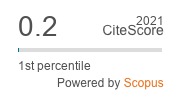Enhancing Urban Train Transportation Efficiency: Design And Implementation Of Context-Aware Applications Empowered By Wireless Sensor Networks
Abstract
The effective operation of urban train transportation systems in densely populated areas is contingent upon their efficiency and dependability. Context-aware application integration with wireless sensor network (WSN) technology is a viable way to improve such transportation networks' efficiency and usefulness. Using the capabilities of WSN technology, this paper demonstrates the design and implementation of context-aware applications especially suited for urban rail transit contexts. The study starts with a detailed examination of the problems and present situation of urban rail transportation systems. The theoretical foundations of context-aware computing and the use of WSNs in transportation scenarios are then covered in detail. Through an extensive analysis of the literature, this paper lays the groundwork for the upcoming stages of design and execution. The architecture of the system has been carefully designed to meet the special needs of urban rail transportation, emphasizing smooth integration, reliable data gathering, and effective processing. Particular focus is placed on sensor placement and selection tactics, taking into account variables including data accuracy, power consumption, and climatic conditions. Algorithms for data processing and gathering are created to efficiently manage streams of real-time sensor data. Methods for context inference, aggregation, and data fusion are used to extract valuable information from the gathered data. Furthermore, the investigation of machine learning techniques is conducted to improve the system's capacity to adjust to changing transportation situations. Next, context-aware apps are created to cater to the various requirements of stakeholders, including as operators, maintenance personnel, and passengers. These apps offer actionable insights, predictive analytics, and real-time data to enhance the overall effectiveness, security, and comfort of urban rail travel. Validating the functionality and performance of the proposed system is mostly dependent on integration and testing. An overview of the major discoveries, contributions, and potential future study areas round out the paper. This research offers up new opportunities for innovation in public transportation systems, opening the path for more intelligent, effective, and sustainable urban mobility solutions by bridging the gap between context-aware computing and urban rail transit.




